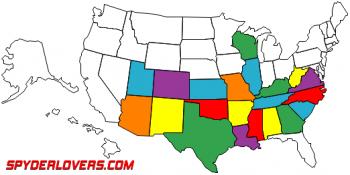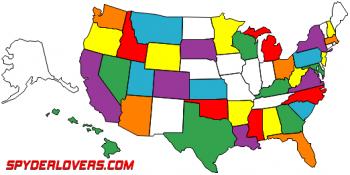|
-
 CVT side air filter vs. engine side air filter CVT side air filter vs. engine side air filter
Does anyone know for a fact if the CVT side sucks in more air? I changed out the filters for K&N's and the air filter was much dirtier on the CVT side. The engine side looked almost new and the CVT side wasn't filthy, but definitely dirtier. way more bugs on the CVT side.
-
Very Active Member
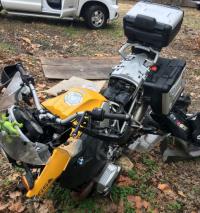

Not to dismiss your question for which I cannot provide a definitive answer. If the filter is dirty, just clean it. That being said, my experience is the same as yours.
-
SpyderLovers Sponsor


Yes, the CVT side sucks a great deal more air than the engine side. Not only do I think the max volume is greater on the CVT side. But it's sucking max volume nearly all the time. The engine side is only sucking max volume at wide open throttle at redline. Makes a great deal of sense. This is why I recommend that if you're going to switch just one side to a K&N, you do the CVT side.
There are a lot of misdirected rumors out there regarding the K&N filters and distributing oil down stream. But my experience, independent, scientific testing, and the evidence of actual usage say that this is not true.
Shop Ph: 423-609-7588 (M-F, 8-5, Eastern Time)
Only SLOW people have to leave on time...


-

BajaRon is a wise man. Read and learn.
-

 Originally Posted by Beginner

Does anyone know for a fact if the CVT side sucks in more air? I changed out the filters for K&N's and the air filter was much dirtier on the CVT side. The engine side looked almost new and the CVT side wasn't filthy, but definitely dirtier. way more bugs on the CVT side.
When I picked my new Rally up, that was one of the things the service manager went over with me, that I should not confuse the CVT filer for the Air Filter and to check the CVT filter every few hundred miles and clean or replace it, there is a lot of air flowing through it and if the filter gets clogged it will overheat the CVT and lead to premature belt failure.
-

lol my dealer didn't tell me anything. I changed both filters to K&n, they are a little pricey, but since they are the same I figured why not.
-

That is kinda funny about the filters distributing oil. I never heard that before. Some of the people I know who had engines built to their specs have K&N filters. I used them in my Trans am and my mustang.
On a side note, your end links were good today in the curves. Finally had a chance to test them out. Is it me, or is it normal to have a little more body roll but tighter (if that is the right word) steering. I need a day to get on the interstate and see how they handle the buffering from the rigs. The stocks ones were no bueno.
-
Very Active Member
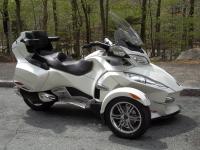

 Originally Posted by BajaRon

Yes, the CVT side sucks a great deal more air than the engine side. Not only do I think the max volume is greater on the CVT side. But it's sucking max volume nearly all the time. The engine side is only sucking max volume at wide open throttle at redline. Makes a great deal of sense. This is why I recommend that if you're going to switch just one side to a K&N, you do the CVT side.
There are a lot of misdirected rumors out there regarding the K&N filters and distributing oil down stream. But my experience, independent, scientific testing, and the evidence of actual usage say that this is not true.
Ron, I got to ask this question, on the CVT side, are the clutches actually drawing air in to the space or are the filters getting dirty from the belt dust inside? Is the dirt on the inside or the outside?
-

Fresh air is drawn from the outside to cool the CVT assembly, thusly the dirt is on the outside of the filter. That is why airflow is reduced as the filter gets loaded doing its job which will result in lesser cooling.
Dean O
Gran Pa Hoon
Founder San Jose BMW
Builder of the Motorcyclist Cafe Barn and Bunkhouse
Alamogordo, NM
'20 Spyder F3 L
-

Based on my snowmobile experience most of the "dirt" you see on the CVT filter is belt dust and not dirt being filtered out of incoming air. The CVT belt creates a lot of fine dust that coats everything it comes in contact with. Snowmobiles have an enclosure around the belt (no filter) and clutches and they get very dirty on the inside as does any area around the enclosure.
-
SpyderLovers Sponsor


 Originally Posted by Kilroy

When I picked my new Rally up, that was one of the things the service manager went over with me, that I should not confuse the CVT filer for the Air Filter and to check the CVT filter every few hundred miles and clean or replace it, there is a lot of air flowing through it and if the filter gets clogged it will overheat the CVT and lead to premature belt failure.
Exactly. There is at least 1 customer who had had to replace the drive belt at around 3,000 miles after finding that the CVT side air filter was clogged. I checked mine because of this. The CVT side on my Ryker was also clogged, but the engine side looked unused at 2,500 miles.
 Originally Posted by Beginner

That is kinda funny about the filters distributing oil. I never heard that before. Some of the people I know who had engines built to their specs have K&N filters. I used them in my Trans am and my mustang.
On a side note, your end links were good today in the curves. Finally had a chance to test them out. Is it me, or is it normal to have a little more body roll but tighter (if that is the right word) steering. I need a day to get on the interstate and see how they handle the buffering from the rigs. The stocks ones were no bueno.
At the same speed on the same curve, you should get less body roll. My guess is that you're going faster because the Ryker is better planted and getting better traction. Going faster will increase the body roll.
 Originally Posted by Mikey

Ron, I got to ask this question, on the CVT side, are the clutches actually drawing air in to the space or are the filters getting dirty from the belt dust inside? Is the dirt on the inside or the outside?
The CVT actually has a fan or blower that sucks air through the filter and blows it by the CVT components and exhausts it out the back. Since the drive side is nearly always turning at optimum RPM, the fan is also turning at high speed, even when you're not going that fast.
 Originally Posted by Rob Rodriguez

Based on my snowmobile experience most of the "dirt" you see on the CVT filter is belt dust and not dirt being filtered out of incoming air. The CVT belt creates a lot of fine dust that coats everything it comes in contact with. Snowmobiles have an enclosure around the belt (no filter) and clutches and they get very dirty on the inside as does any area around the enclosure.
I am not sure you can compare the 2 systems. While it is true that the belt does shed fine particles of material. Snowmobiles have a sealed system. Nowhere for the belt material to go. The Ryker has an open system, drawing a high volume of air in from the front, running it by the drive system, then pumping it out the back. All of the dirt will be on the intake side of the air filter. I don't see any way for material to get to the back side of the filter. I have not seen much, if any, buildup of material in my Ryker. I think most of it is carried out with the air flow.
Last edited by BajaRon; 08-23-2021 at 09:39 AM.
Shop Ph: 423-609-7588 (M-F, 8-5, Eastern Time)
Only SLOW people have to leave on time...


-
Active Member
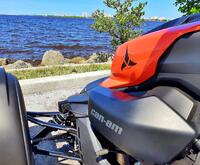

For someone who is new to this type of engine system, thanks for the info. I want to keep my Ryker running in tip-top shape. I see the benefit and will adding a K&N filter to the CVT side.
-
Member
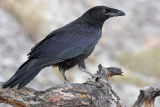

Since much of this thread seems to concern K&N filters, I suggest you read this report:
https://pdf.sciencedirectassets.com/...qa&type=client
Unless you are competing, it looks like the decision to use an OEM style paper filter or the K&N type is largely a financial one.
BS
-
Active Member
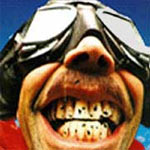

 Originally Posted by BajaRon

There are a lot of misdirected rumors out there regarding the K&N filters and distributing oil down stream. But my experience, independent, scientific testing, and the evidence of actual usage say that this is not true.
Only "problem" is not reading the directions. You want to have a good even coat of oil (I spray the filter, let it sit a minute or two, spray it again, and then knock it lightly around the edges to shake out any excess. Last step is to let it drip out overnight before installing.
DO NOT use compressed air to speed things up as that can spread the filter media and leave gaps.
* Biggest benefit of the K&N is wet weather performance. A paper filter can lose a bunch of efficiency ever with high humidity.
-

Thank you for posting this. I do enjoy reading research articles. One side note, this was for diesel engines. The second note I make is that they reported their test results (which any good researcher would) then they added this little tidbit :Fig 8 shows that the filtering efficiency of the OEM filter was superior to that of the K&N filter. ......The actual filtering efficiency of the K&N filter will be higher in real life scenario due to the increased surface area exposed to the air stream. This is the sole reason for a K&N filter, to have more efficient filtering. Getting a tenth of a second edge won't matter to most Ryker owners as they aren't going to the track. One last thing, they say that (paraphrasing) K&N are too costly comparatively speaking, however, the OEM filter is a one and done vs. the K&N being reusable. That is a big difference in the long run, but wasn't mentioned in the article.
Thanks again, I enjoyed learning something new today.
-
Active Member


Changing the CVT filter is as easy as opening the right side cover. Add 30 minutes to clean the K&N and maybe an extra 10 minutes for a tasty beverage.
I plan on cleaning the filter every 1500 miles or so as I live in right on the coast subject to heat, sand, bugs, and humidity. I don't want to be that guy changing out their CVT belt in 3000 miles.
-
Active Member
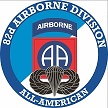

OK, so I'm surely not the sharpest knife in the drawer. A couple of things in the India engineering college study that ravenrest linked (post #13) that I'm having some trouble wrapping my head around:
1. A 5hp diesel engine is used in most of the tests.
2. Filter clogging is simulated by wrapping the filter(s) with tissue paper.
3. Only two of the tests (acceleration and fuel economy) appear to have been performed using recognized standards, and for those the K&N appears to have faired well.
4. The filtering efficiency test was...well...your guess is as good as mind.
Whenever I read engineering studies like this I always keep in mind the fact that every measurement contains error.
-
SpyderLovers Sponsor


 Originally Posted by ravensrest

Since much of this thread seems to concern K&N filters, I suggest you read this report:
https://pdf.sciencedirectassets.com/...qa&type=client
Unless you are competing, it looks like the decision to use an OEM style paper filter or the K&N type is largely a financial one.
BS
Not a scientist and have no way to test air flow. But the results in this article go against all of the independent testing for air flow volume that I've seen. Not sure how to account for this.
Shop Ph: 423-609-7588 (M-F, 8-5, Eastern Time)
Only SLOW people have to leave on time...


-
SpyderLovers Sponsor


 Originally Posted by RickD

OK, so I'm surely not the sharpest knife in the drawer. A couple of things in the India engineering college study that ravenrest linked (post #13) that I'm having some trouble wrapping my head around:
1. A 5hp diesel engine is used in most of the tests.
2. Filter clogging is simulated by wrapping the filter(s) with tissue paper.
3. Only two of the tests (acceleration and fuel economy) appear to have been performed using recognized standards, and for those the K&N appears to have faired well.
4. The filtering efficiency test was...well...your guess is as good as mind.
Whenever I read engineering studies like this I always keep in mind the fact that every measurement contains error.
I use and sell the K&N filters. So, I may not be the most objective person around. But this just does not seem to be a real world test method. A 5hp diesel does not necessarily correlate to a 100 hp gasoline engine. Nor does tissue paper necessarily produce the same effect as dirt. The tests I've seen take a certain amount of dirt particles of a certain size, measured to exacting amounts and spread evenly onto the various filter surfaces being tested. This would seem to me a more accurate, real world way to take these kinds of measurements. They certainly produced different outcomes.
Shop Ph: 423-609-7588 (M-F, 8-5, Eastern Time)
Only SLOW people have to leave on time...


-

Is there any difference in sound using the K&N on the engine side.. one review i saw said it was a little deeper sound but noone else seems to mention it
-
Ozzie Ozzie Ozzie
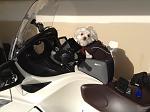
2013 RT Ltd Pearl White
Ryde More, Worry Less!
-

This one is pretty interesting, its lengthy but thorough.
2020 Can Am Ryker Rally Sport Touring Edition
-
Member


Great post, Rick. This test seems to offer more realistic results than the one I posted. Unless you are seeking out-and-out best performance though, it looks like the paper filters do a better job protecting the engine. They also have an economic advantage if you figure you are never going to drive more than about 25K miles. I am not a competitor, so it looks like I'll be sticking with paper filters.
BS
-

 Originally Posted by ravensrest

BS
The cynic in me thinks that these closing 2 letters detract from all of the letters/words/thoughts/arguments in the replies you post. If there is a significance to these letters other than the disparaging one please, please enlighten me.
Eckhard
Spyder RT Ltd, 2011
-
SpyderLovers Sponsor


I really like this guy. I've watched a number of his Project Farm videos and they tend to be quite good. But a big part of any test and results are process based. Good process, good results, and vise-versa.
The theory here is pretty good. But there are some unanswered questions in this testing. Like what is the CFM or volume of air being pulled in these tests? Does it match up with the CFM that the filter is designed for? A typical 350ci engine will draw about 400 CFM at 5,000 RPM. PM's setup could easily well exceed this air volume. He doesn't give a CFM so we don't know.
Paper filters are not much affected by an over CFM draw. But an oiled fiber filter like the K&N is because it distorts the overlapping filament pattern which will allow particles to pass that under design parameters, would not. If the CFM is not real world, then the test is invalid.
A second issue is that filters are not designed to have large amounts of material just dumped in heaps on top of them. They are designed to remove material which is suspended in the air as it passes through the filtration medium. This was not a real world environment and basically, invalidates the test.
Again, dumping large clumps of material onto a paper filter isn't going to affect it all that much, other than doing a good job of clogging it up. But dumping a pile of material onto an oiled filament filter is going to unnaturally spread the overlapping fibers, allowing large amounts of impurities to pour through. Which is exactly what the test proved. But this isn't the real world where your air filter lives. To expect any filter to do well in an unrealistic test is not fair.
Oiled filament filters may or may not do as good a job of filtration as a paper filter. But this is not an accurate way to test that function. This portion of the video is unfortunate and misleading.
I am not saying that you should not seek out the facts. But I would say that basing your filter purchase on the results of this video would not be your best choice.
One thing is for sure. If you plan on dumping large amounts of fine dirt on top of your air filter. Paper is definitely the way to go. But you'll need to change your filter as soon as you've done this.
Last edited by BajaRon; 09-02-2021 at 05:36 PM.
Shop Ph: 423-609-7588 (M-F, 8-5, Eastern Time)
Only SLOW people have to leave on time...


 Posting Permissions
Posting Permissions
- You may not post new threads
- You may not post replies
- You may not post attachments
- You may not edit your posts
-
Forum Rules
|




 Reply With Quote
Reply With Quote